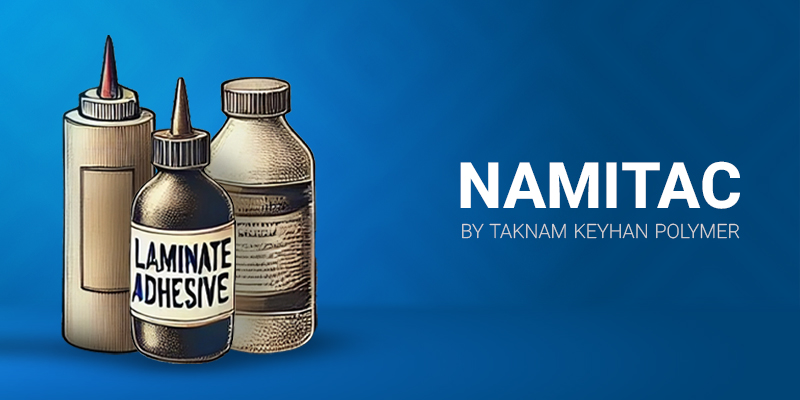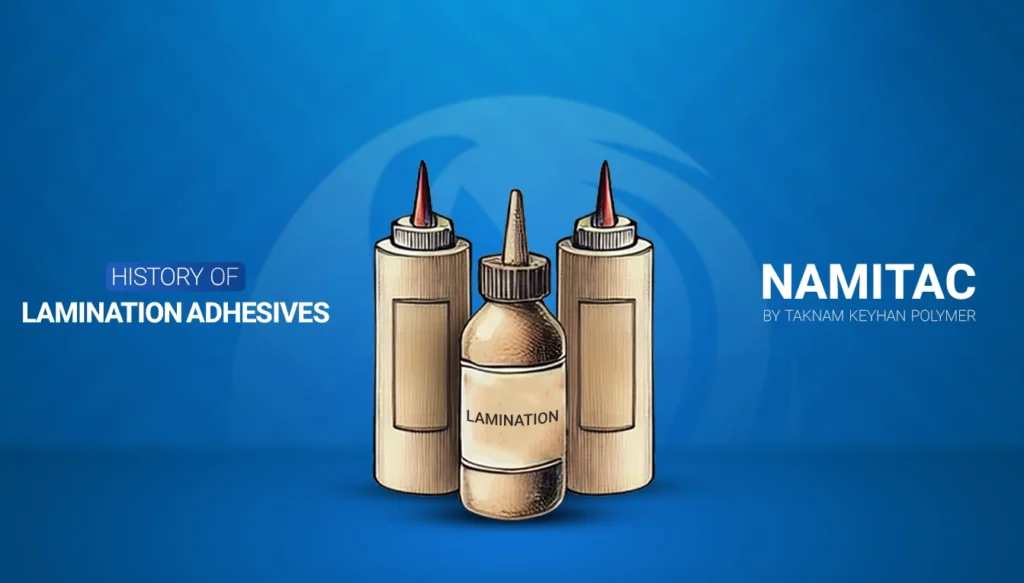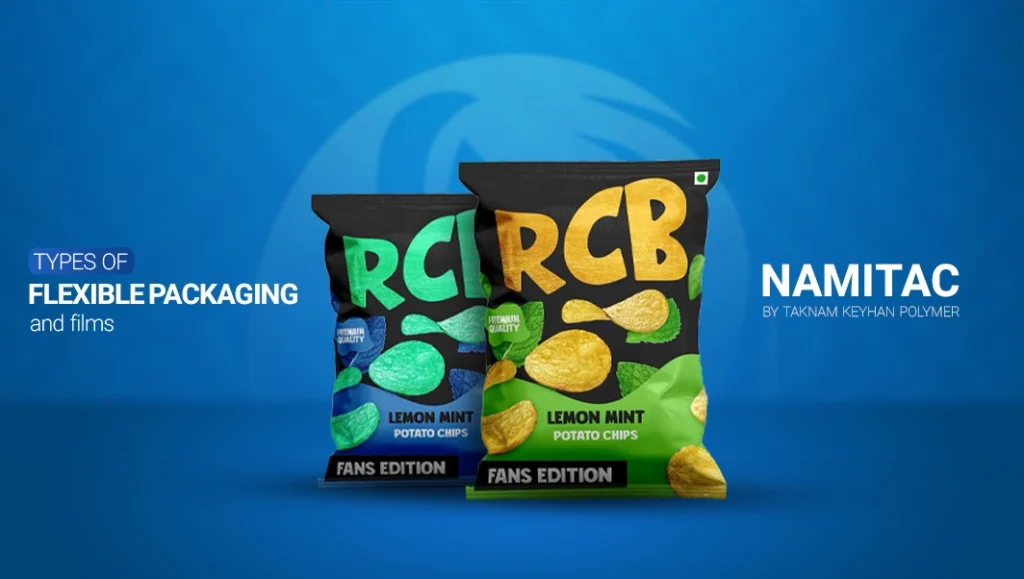
Overview of the history of the flexible packaging laminate adhesive industry
One of the most important factors that companies in the manufacturing sector pay attention to is packaging. Flexible packaging for food and other consumer goods has existed for a long time and is now essential for efficient distribution, food protection, and economic benefits.
Modern packaging cannot exist in its countless forms and functions without the integral role of flexible packaging laminating adhesives, among many other components. Laminating adhesive is a vital component in the production of flexible packaging products for various industries with end uses including healthcare and pharmaceuticals, food and beverages, manufacturing, and more.
A brief look at the history of packaging and laminating adhesives

Even before the industrialization of societies, packaging materials and products had been used for a long time to preserve food and products at home or transport them from farms or production sites to shops or local markets. Examples include packaging grains and flour in bags or wooden boxes, and packaging oily substances in jars. The origins of modern packaging and canning methods included early packaging techniques such as the use of wax paper, leather, skins, or cork.
The emergence of the industrial revolution brought about a fundamental transformation in the commodity production system. The industrial revolution confronted the world with an explosion of various industrial goods. The diversity of products and intense competition among manufacturers and traders gradually introduced art, alongside other sciences, into the packaging system. With further advancements, other sciences such as individual and social psychology were added to this collection. The development of packaging caused this industry to become independent from other industries, and competition and demand led to significant portions of manufacturing companies’ budgets being allocated to packaging industries.
In relation to the packaging industry, an unexpected advancement occurred in England with the invention of polyethylene. In December 1935, British chemists discovered a new substance called ethylene, which had good thermal insulation properties. Early laminating adhesives have been used for over a century to create flexible packaging. Laminating is typically used to preserve printed materials. In fact, lamination means applying a thin layer over or under a printed sheet to protect it from moisture and temperature changes. The history of the flexible packaging laminating adhesive industry dates back about 40 years, with major American companies like LyondellBasell, DOW, and Dupont being the originators of these adhesives.
The first versions of these adhesives were made from natural materials such as animal glue and egg whites. However, these materials tended to be brittle and had low strength. In the late 1800s, chemists began experimenting with new adhesives that were more durable and flexible. One of the most popular types of adhesive today is known as thermoplastic adhesive (TPA). TPA is made from polymer and heat. This process creates a strong bond between two materials that is resistant to water, oil, and other chemicals.
After world war II, the use of plastic materials became common in the packaging industry, and today their application in this area is of primary importance in terms of consumption levels.
With the emergence of plastic as a valuable packaging material (in the late 1970s and early 1980s), it replaced paper. Today, packaging industries have transformed into a flexible packaging technology that utilizes laminates and have become one of the main growth areas in the packaging industry over the past few decades. In terms of environmental pollution, laminates are significant materials and are effective in reducing environmental pollution in many cases.
Laminates are created by combining two or more layers of selected materials together. Usually—though not always—these layers are in sheet form. To create a suitable flexible packaging material that possesses desirable and optimal properties, it is sufficient to use several layers, each having one or more desired properties, which are then produced as a laminate.

Laminates are made from various combinations including adhesives, paper, plastic films, surface coatings of aluminum foils, metallized papers with aluminum, and other foils. The layers used in the structure of a laminate can be tested in terms of quality or properties as follows:
- Structural properties such as physical strength, elongation, burst resistance, abrasion resistance, etc.
- Performance properties such as machinability, sealability, and environmental resistance.
- Impermeability to moisture, gases, odors, and ultraviolet light.
- Aesthetic properties such as transparency, opacity, tactile properties, and metallic appearance.Flexible packaging consists of plastic materials in the form of films, which also include other materials such as paper and aluminum foil as composite layers. The raw materials used in packaging extend the shelf life of the product. Laminating adhesives are commonly used in the production of flexible packaging. They are effective in creating a strong bond between two surfaces, allowing for the production of packaging that is both flexible and resistant to abrasion and tearing. Laminating adhesives are also environmentally friendly because they do not require harsh chemicals or heat to activate.The first and most important criterion for selecting suitable interlayer adhesives is the structure of the desired packaging, including the number and type of layers and the thickness of each layer.
Polyurethane laminating adhesives are made from urethane polymers. Urethanes are produced through a chemical reaction between diisocyanates and polyols. Polyurethane laminating adhesives are used in various applications due to their high toughness, abrasion resistance, flexibility (especially at low temperatures), and adhesion to a wide range of substrates. They possess various properties such as flexibility and strength, low curing temperatures, excellent low-temperature resistance, and high environmental resistance.
The most commonly used adhesives in the industry are polyurethanes. They have a long history of use, good overall adhesive properties, and a wide range of performance specifications. The main building blocks of these adhesives are an isocyanate (either aromatic or aliphatic) and a polyol (either polyester or polyether). The reaction between these two components results in urethane formation. Aromatic isocyanates, which are the most common, are unsaturated cyclic compounds. They have fast reactivity, good thermal and chemical resistance, and lower costs but are prone to yellowing under UV light. Aliphatic isocyanates, which are less common, have a higher price point, slower reactivity, but excellent UV resistance and can be used in higher FDA regulations such as retort regulations.
Laminating adhesives can be offered in solvent-based, solventless, and water-based forms. In practice, laminating adhesives used for producing flexible food packaging are primarily of the PUR type. To prevent the migration of isocyanate monomers, adhesives must be given time to dry completely. Generally, the lower the amount of isocyanate, the shorter the curing time will be. Time is a crucial factor for packaging manufacturers because prolonged curing times mean limited working capital, which negatively impacts costs—especially in highly competitive businesses.
The future of “laminating adhesives for flexible packaging” looks very promising. Researchers are developing new laminating adhesives that can be used in various applications, including flexible packaging. These adhesives are more durable than traditional adhesives, making them more suitable for flexible packaging. They also have a higher melting point, meaning they can be used in high-temperature environments. This allows them to be utilized in items such as food containers and pharmaceutical products.
